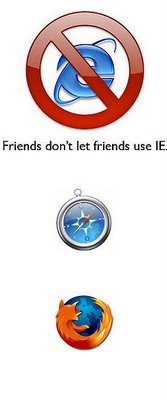mergulhar sem ficar molhado
via Google LatLong by elaine on 2/2/09
Posted by Sylvia A. Earle, Explorer-in-residence, National Geographic
Three years ago, I met Google Earth and Maps Director John Hanke at a conference in Spain, and had a chance publicly to say how much I love Google Earth. "My children, my grandchildren think it is great to see their backyard, fly through the Grand Canyon, visit other countries," I said. "But, John, when are you going to finish it? You should call Google Earth 'Google Dirt'. What about the ¾ of the planet that is blue?"
That fateful conversation led to a team of Googlers coming together to make Google Earth complete. We enlisted the U. S. Navy, NOAA, NASA, the National Geographic, BBC and numerous ocean institutions and organizations, coordinated by DOER Marine Operations. I chaired a Council of Advisors including dozens of scientists, who weighed in on how to bring together information about 97% of the biosphere and make it accessible to the world on Google Earth. Today, our efforts have paid off with the launch of Ocean in the new Google Earth 5.0. Everyone, from little kids to serious scientists, desk-bound executives and policymakers to far-flung field explorers – all now have new ways of looking at the world. The whole world.
I have been exploring the ocean as a scientist since the 1950s, and have tried every way I know how to explain what I see and convey to others the profound sense of urgency I feel about the changes that are taking place. I have tried with talks, films, interviews, magazine stories, and books to show that the ocean is fundamental to human prosperity, health, security, and the existence of life itself. And I have tried to alert the world to what I have come to understand. The ocean is in trouble, and therefore, so are we.
Now, with the new version of Google Earth, people can see within a few hours what it has taken me a lifetime to understand. Anyone can fly to Hawaii vicariously and see the real Hawaiian islands, not just the mountain tops that poke through the ocean's surface. You can swim with whales, inspect coral reefs, or see the impacts of destructive fishing. Anyone now can slip into the sea and find hundreds of images of creatures and see them on their own terms, underwater. Now, you can dive to the deepest place in the ocean, the Mariana Trench, where only two people have ever actually been – in 1960.
Open the "Ocean" folder in the Layers panel to explore the 20 content layers from over 100 partners. Double click on the "Explore the Ocean" layer and it will fly you to my Ocean Overview video and ten focus areas with National Geographic video clips. Other layers include dynamic sea surface temperature, Census of Marine Life data, Marine Protected Areas, shipwrecks, dive and surf sites, Arkive images, Planet Earth footage from the BBC, and much more. You can even visit a 3D model of the undersea laboratory Aquarius and fly to the Titanic and follow the expedition that discovered it.
The launching of the Ocean in Google Earth has instilled in me a new sense of optimism and hope because it provides, in a stroke, a whole new way of understanding the nature of the world and our place in it. Knowing is the key. With knowing comes caring, and with caring there is hope that we can – and will —find an enduring place for ourselves within the mostly blue planet that sustains us.











Sem comentários:
Enviar um comentário